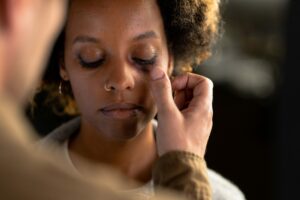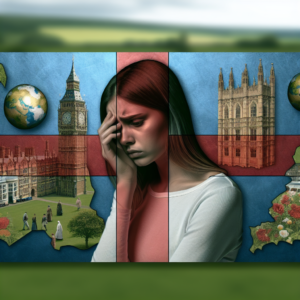Title: Shedding Light on the Silent Epidemic: Breaking the Cycle of Domestic Violence
Introduction
Domestic violence is a pervasive and silent epidemic that affects individuals across all races, religions, genders, and socioeconomic backgrounds. It encompasses a range of abusive behaviors including physical, emotional, and psychological violence. Unfortunately, due to fear, shame, and societal stigma, many victims choose to suffer silently, allowing the cycle of abuse to persist. In this article, we will explore the complex nature of domestic violence, its impact on victims and society, and the importance of breaking the cycle through education, prevention, and empowerment.
Understanding Domestic Violence
Domestic violence is not limited to physical abuse. It includes a wide spectrum of behaviors such as intimidation, isolation, control, coercion, threats, and financial abuse. These actions aim to assert power and control over the victim, creating an environment of fear and dependency. Victims often experience long-lasting physical and psychological trauma, which can lead to severe mental health issues, substance abuse, and even suicide.
The Impact on Victims and Society
The impact of domestic violence extends beyond the immediate victim. Witnessing violence in the household can have a detrimental effect on children, perpetuating cycles of abuse across generations. Additionally, domestic violence imposes a significant economic burden on society, with costs related to medical care, legal services, social services, and lost productivity.
Breaking the Cycle: Education, Prevention, and Empowerment
1. Education:
a. Public awareness campaigns: Raising public consciousness about domestic violence is crucial. Through media campaigns, educational programs, and public discussions, we can challenge stereotypes and misconceptions, encouraging victims to seek help and communities to take action.
b. School-based prevention programs: Introducing education on healthy relationships and consent in school curricula can help dismantle harmful gender norms, promote empathy, and create a supportive environment for victims.
2. Prevention:
a. Early intervention: Identifying signs of abuse early on and offering support can prevent further escalation. Healthcare professionals, social workers, and educators should receive training to identify and respond to domestic violence cases effectively.
b. Financial independence: Economic empowerment plays a pivotal role in breaking the cycle of abuse. Providing victims with resources such as job training, housing assistance, and financial aid can give them the means to escape their abusive relationships and regain control of their lives.
3. Empowerment:
a. Support services: Establishing accessible community resources, such as helplines, shelters, and counseling services, can offer immediate assistance to victims, helping them navigate the legal, emotional, and physical challenges of leaving an abusive relationship.
b. Legal reforms: Stricter laws and enforcement against domestic violence offenders can act as a deterrent and provide victims with legal protection. Ensuring victims have access to legal aid and restraining orders can help break the cycle of abuse.
FAQs Section:
Q1: What should I do if I suspect someone I know is a victim of domestic violence?
A: Express your concern and offer support. Encourage them to seek assistance from a trusted professional or helpline. Remember to prioritize their safety and respect their decisions.
Q2: Can men be victims of domestic violence too?
A: Absolutely. Although women are disproportionately affected, men can also be victims of domestic violence. It’s essential to recognize that abuse can happen in any relationship, regardless of gender.
Q3: How can I make a difference in combating domestic violence?
A: Start by educating yourself and others about the signs of abuse and available resources. Support local organizations working to end domestic violence through donations, volunteering, or advocacy. Speak out against victim-blaming and challenge societal norms that perpetuate violence.
Q4: How does domestic violence affect children?
A: Witnessing and experiencing violence can have devastating effects on children. They may suffer from anxiety, depression, aggression, and impaired social development. Interventions such as counseling, support groups, and safe spaces can assist in their healing process.
Q5: Is it possible for an abuser to change their behavior?
A: While change is possible, it is rare without professional intervention. It is crucial for abusers to seek therapy and take responsibility for their actions. However, the focus should always be on the safety and well-being of the victim.
Conclusion
Domestic violence is a widespread and deeply entrenched issue that demands comprehensive action. It is only by shedding light on this silent epidemic and breaking the cycle through education, prevention, and empowerment that we can hope to create a society free from abuse. By raising awareness, providing support services, and implementing legal reforms, we can stand together and build a future where no one suffers in silence.
















